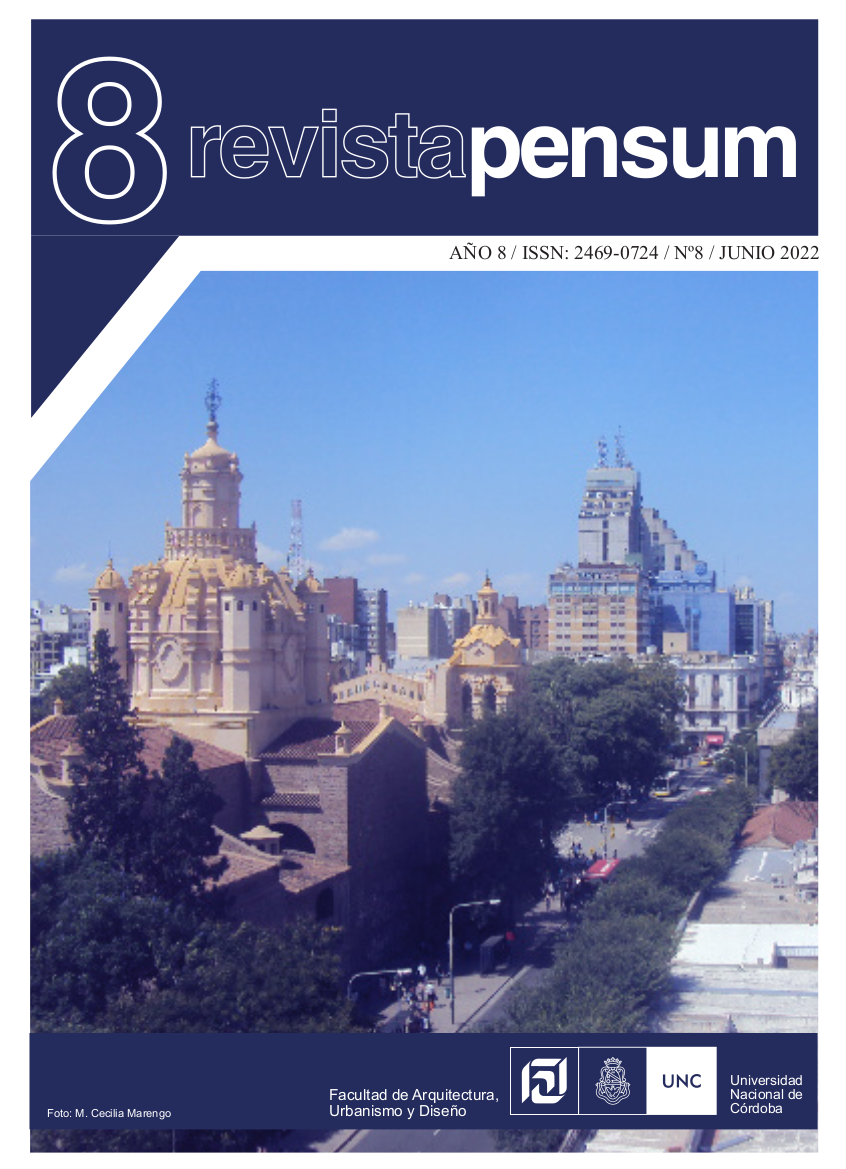temporary dimensions.
Scales of the experience in the spaces of the KAIT Workshop and Plaza de Junya Ishigami.
DOI:
https://doi.org/10.59047/2469.0724.v8.n8.34591Keywords:
Temporal dimentions, scales, body experience, perception, architectural spaceAbstract
The specific objective of this study is to inquire about the temporal dimensions of architectural space. The investigation is focused on the body perception and it is based on disciplinary theoretical references crossed with phenomenological philosophical discourses, mainly those of Merleau-Ponty, and critics, such as those of Benjamin, Sennett and Virilio that account a gradual impoverishment of the sensible experience. This article defends the hypothesis that the qualities of the architectural space can alter the perception of temporal dimensions. From a methodological point of view, the work is specified as a theoretical reflection that will appeal to a double case study with qualities strongly linked to the subject: The Workshop and the Plaza of the Kanagawa Institute of Technology (KAIT) designed by the Japanese studio Junya Ishigami + associates. The results show that the nature of the architectural space can provoke different perceptual states, and at the same time that the temporal scale, little-attended relationship in architecture research, is a significant attribute that could stimulate the development of the project process.
References
Allen, G., & Moore, C. W. (1978). Dimensiones de la arquitectura. Espacio, forma y escala. (P. Bonet & E. Riambau i saurí, Trads.), 1976. Barcelona: Gustavo Gili.
Benjamin, W. (1989). Discursos interrumpidos I. (J. Aguirre, Trad.). Buenos Aires: Taurus.
Benjamin, W. (1999). Sobre algunos temas en Baudelaire. 1939. elaleph.com.
Bizzotto, L. J. (2020). Extrañamiento. La experiencia corporal en el espacio alterado del ex Molino Marconetti. AREA, 26(2), 1-16. Recuperado de https://www.area.fadu.uba.ar/wp-content/uploads/AREA2602/2602_bizzotto.pdf
Bloomer, K. C., & Moore, C. W. (1982). Cuerpo, memoria y arquitectura. Introducción al diseño arquitectónico. (M. T. Muñoz Jiménez, Trad.), 1977. Madrid: H. Blume.
Cacciari, M. (2010). La ciudad. (M. Puente, Trad.), 2004 (4.a ed.). Barcelona: Gustavo Gili.
De Cauter, L. (2004). The Capsular Civilization: On the City in the Age of Fear. Rotterdam: NAi Publishers.
García Pérez, A. (2013). El KAIT de Ishigami como manifiesto de una arquitectura contemporánea. Universidad Politécnica Madrid, Madrid, España. Recuperado de http://oa.upm.es/35486/
Giedion, S. (2009). Espacio, tiempo y arquitectura: origen y desarrollo de una nueva tradición. (J. Sainz, Trad.), 1941. Barcelona: Reverté.
Hale, J. A. (2017). Merleau-Ponty for architects. Nueva York: Routledge.
Harvey, D. (1998). La condición de la posmodernidad. Investigación sobre los orígenes del cambio cultural. (M. Eguía, Trad.), 1990 (Vol. 53). Buenos Aires: Amorrortu.
Holl, S. (1997). Entrelazamientos. Barcelona: Gustavo Gili.
Holl, S. (2011). Cuestiones de Percepción Fenomenología de la arquitectura, 1-18.
Ishigami, J. (2011). Junya Ishigami - Another scale of architecture. Tokyo: Seigensha Art Publishing.
Jullien, F. (2010). las transformaciones silenciosas. (J. M. Marcén, Trad.), 2009. Barcelona: Bellaterra.
Langer, S. K. (1953). Feeling and form: a theory of art. New York: Charles Scribner’s Sons. https://doi.org/10.2307/2020671
Mattens, F. (2011). The aesthetics of space: Modern architecture and photography. Journal of Aesthetics and Art Criticism, 69(1), 105-114. https://doi.org/10.1111/j.1540-6245.2010.01451.x
Merleau-Ponty, M. (1984). Fenomenología De la Percepción. (J. Cabanes, Trad.), 1945. Barcelona: Planeta-Agostini.
Merleau-Ponty, M. (1986). EL ojo y el espíritu. (J. Romero Brest, Trad.), 1964. Barcelona: Paidòs Ibérica.
Norberg-Schulz, C. (1975). Existencia, espacio y arquitectura. 1971. Barcelona: Editorial Blume.
Pallasmaa, J. (2012). La mano que piensa. Sabiduría existencial y corporal en la arquitectura. Barcelona: Gustavo Gili.
Pallasmaa, J. (2014). La imagen corpórea. Imaginación e imaginario en la arquitectura. Barcelona: Gustavo Gili.
Pallasmaa, J. (2015). Los ojos de la piel. La arquitectura y los sentidos. (2.a ed.). Barcelona: Gustavo Gili.
Pallasmaa, J. (2016). Habitar. Barcelona: Gustavo Gili.
Parodi Rebella, A. (2011). Escalas alteradas. La manipulación de la escala como detonante del proceso de diseño. Unidad de Comunicación de la Universidad de la República, Montevideo, Uruguay.
Poincaré, H. (1945). Ciencia y método. (M. García Miranda & L. Alonso, Trads.), 1908 (2.a ed.). Buenos Aires: Espasa - Calpe.
Sennett, R. (1997). Carne y piedra. El cuerpo y la ciudad en la civilización occidental. Madrid: Alianza Editorial.
Sennett, R. (2009). El artesano. (M. A. Galmarini, Trad.), 2008. Barcelona: Anagrama.
Serres, M. (2014). Pulgarcita. (A. Díez, Trad.), 2012. Barcelona: Gedisa.
Virilio, P. (1993). La inseguridad del territorio. (T. J.-E. Iplicjian & J. M. Casas, Trads.), 1976. Buenos Aires: La marca.
Virilio, P. (2001). El procedimiento silencio. Buenos Aires: Paidós.
Virilio, P. (2003). El arte motor: aceleración y realidad virtual. (H. Pons, Trad.), 1993 (1.a ed.). Buenos Aires: Manantial.
Zevi, B. (1963). Saber ver la arquitectura. (C. Calcaprina & J. Bermejo Goday, Trads.), 1951 (4.a ed.). Buenos Aires: Poseidón.
Zumthor, P. (2006). Atmósferas. (P. Madrigal, Trad.). Barcelona: Gustavo Gili.
Otras fuentes
Barba, José J. (2021) El paso del tiempo como idea. Plaza del Instituto de Tecnología de Kanagawa por Junya Ishigami. En: https://www.metalocus.es/es/noticias/el-paso-del-tiempo-como-idea-plaza-del-instituto-de-tecnologia-de-kanagawa-por-junya-ishigami
https://iwan.com/portfolio/junya-ishigami-kanagawa-institute-of-technology/
Downloads
Published
Issue
Section
License
Copyright (c) 2022 Lucas Bizzotto

This work is licensed under a Creative Commons Attribution-ShareAlike 4.0 International License.
Authors who publish in this journal agree to the following terms:
a. Authors retain copyright and guarantee to the journal the right to be the first publication of the work as well as licensed under a Creative Commons Attribution-ShareAlike 4 license.
b. Authors may separately establish additional agreements for non-exclusive distribution of the version of the work published in the journal (e.g., placing it in an institutional repository or publishing it in a book), with an acknowledgement of its initial publication in this journal.
c. Authors are permitted and encouraged to disseminate their work electronically (e.g., in institutional repositories or on their own website) before and during the submission process, as this may result in productive exchanges, as well as earlier and greater citation of published work (See The Effect of Open Access).
d. 4.0 International Creative Commons Attribution-ShareAlike 4.0 License.












